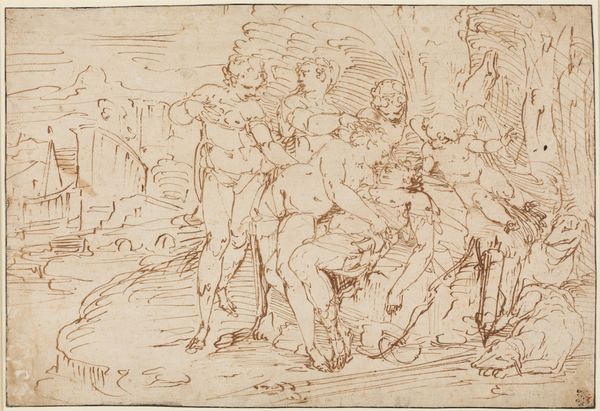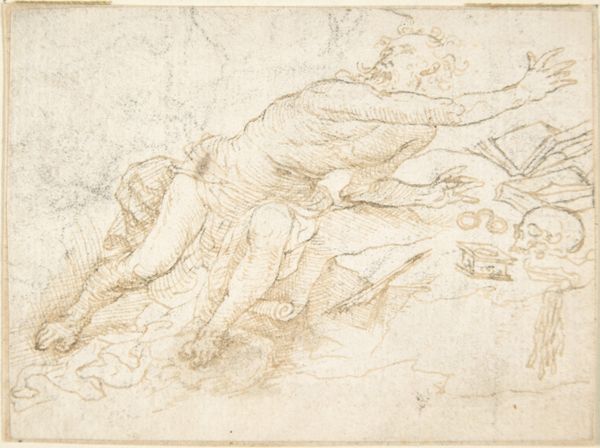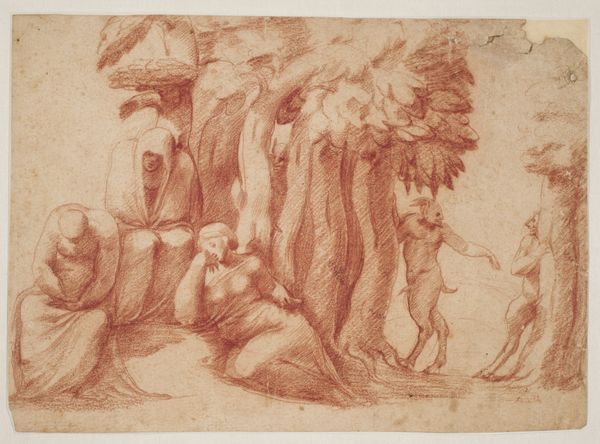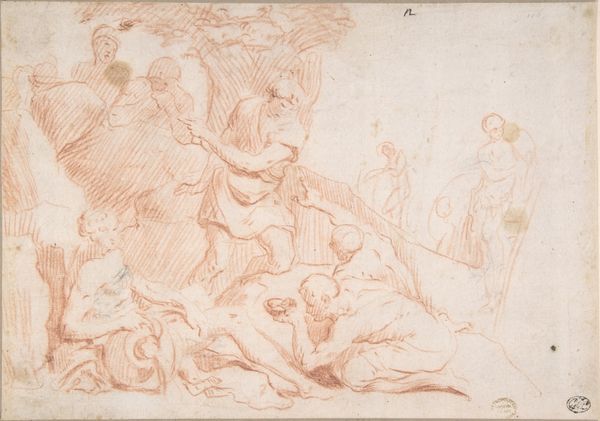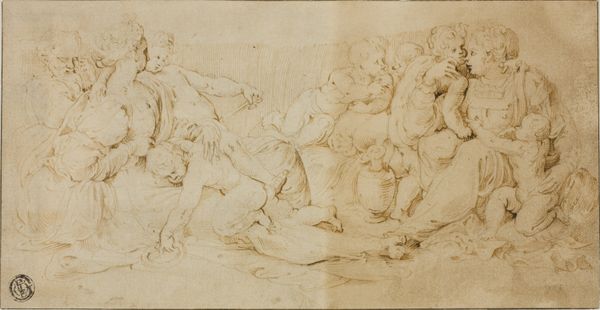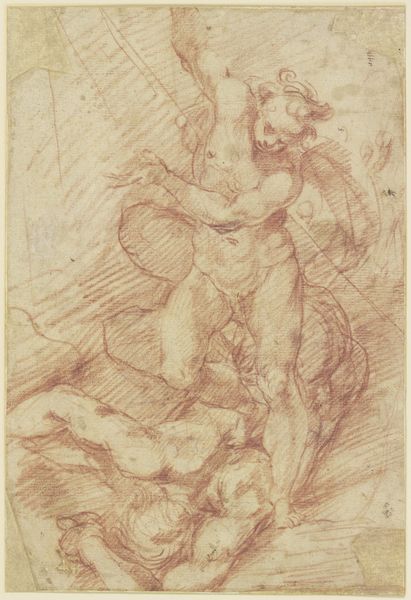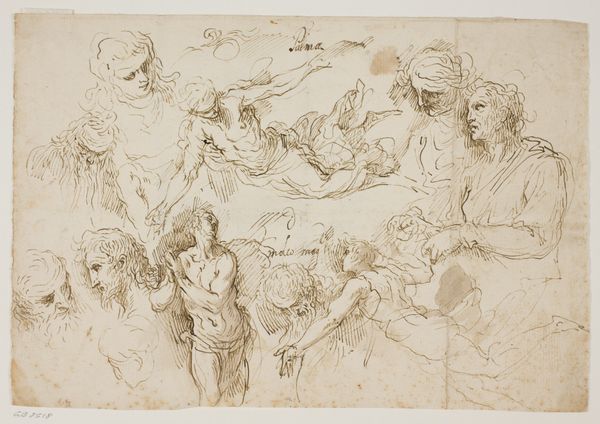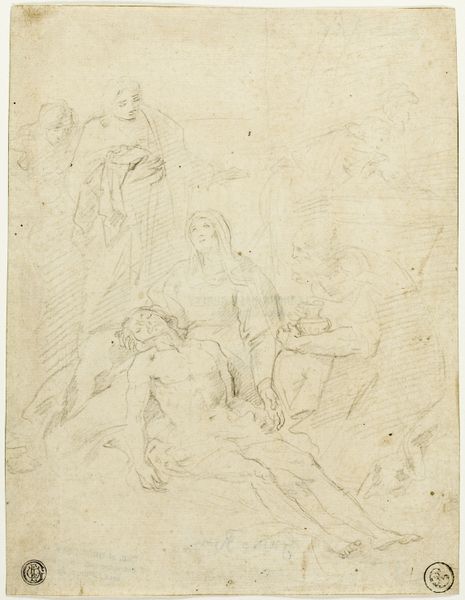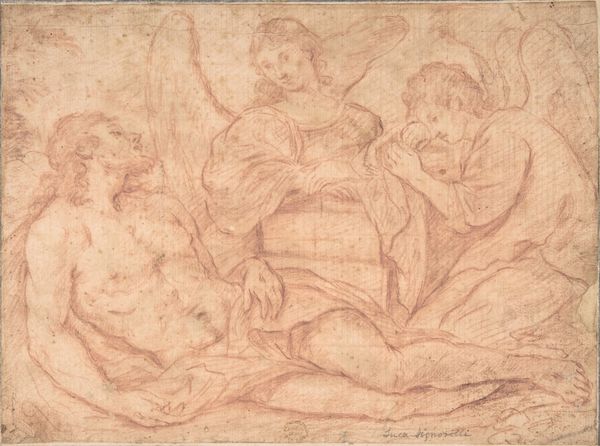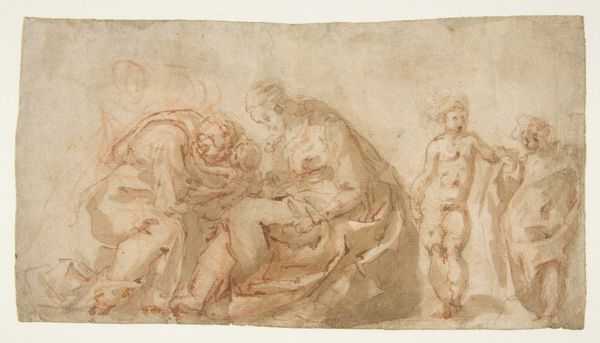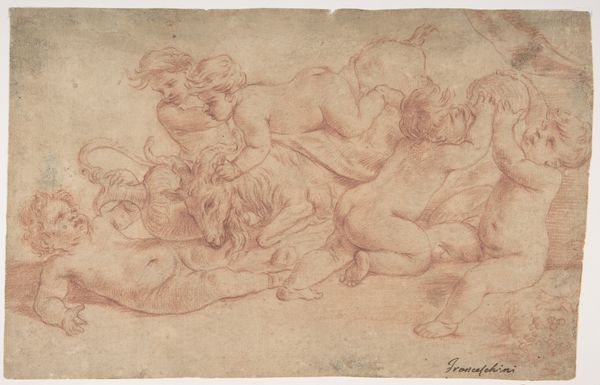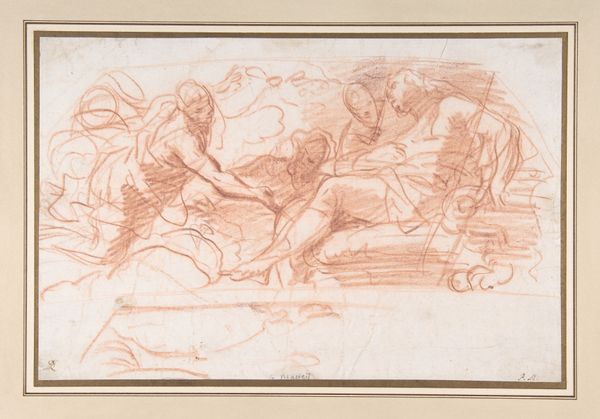
drawing, red-chalk
#
portrait
#
drawing
#
high-renaissance
#
red-chalk
#
figuration
#
italian-renaissance
Copyright: Public Domain
Curator: This drawing is "Daniel in the Lion's Den," rendered in red chalk by Parmigianino, sometime between 1531 and 1535. It resides here at the Städel Museum. Editor: The warmth of the red chalk lends a softness to what is, in reality, quite a dramatic scene. It's a compelling contrast. Curator: Indeed. The red chalk allows us to delve into Parmigianino’s creative process and the materiality of this work. We see his quick, searching lines—the very physical act of drawing manifesting before us. It brings attention to artistic labor of early Italian Renaissance artists. Editor: And the context! Consider the institutional and societal factors. Religious imagery was, of course, powerfully intertwined with the political and social landscape. Daniel's story itself – perseverance in the face of persecution – carried enormous political weight. Curator: Right, red chalk as a medium afforded this ease, allowing the design to evolve dynamically. What might seem like casual execution reveals masterful control when examined closely. What materials were available? How readily was this paper acquired? This is not merely a spontaneous sketch. Editor: The public role of these images must have been huge! This imagery not only promoted specific virtues but bolstered institutional power and offered tangible narratives during times of widespread social, religious and political upheaval. I would suggest it still has a significant cultural and emotional weight centuries on. Curator: I think you bring up fascinating avenues. Thinking materially, red chalk enabled him to achieve a subtle, atmospheric quality unattainable with, say, pen and ink, further enhancing emotional effect. A subtle method by way of artistic innovation. Editor: Exactly! The politics of representation! Each lion's languid posture implies restraint, maybe even obedience—quite loaded with societal messaging and the visual manifestation of power. Curator: Thinking materially brings us face to face with his artistry. The softness and warmth draw our gaze directly to form in action. It allows an immediate reading and deeper connections beyond history. Editor: Considering the image historically enables further contextual consideration of socio-political impacts which remain ingrained within its historical, and maybe even its current meaning, too. Curator: Ultimately, both approaches – historical and material – can give a richer understanding of its lasting impressions. Editor: Agreed. Every analysis is just an entry point—never exhaustive!
Comments
No comments
Be the first to comment and join the conversation on the ultimate creative platform.
